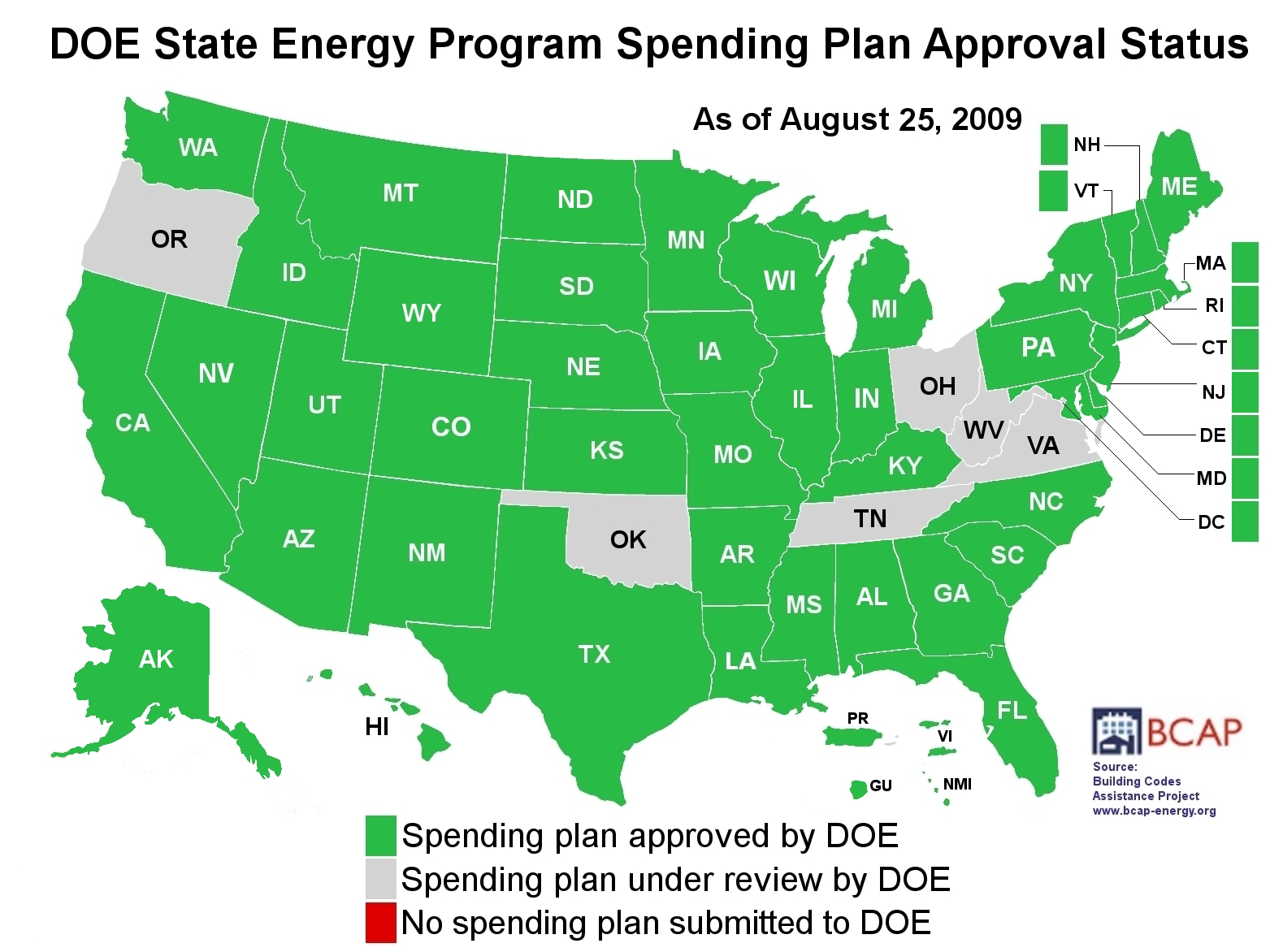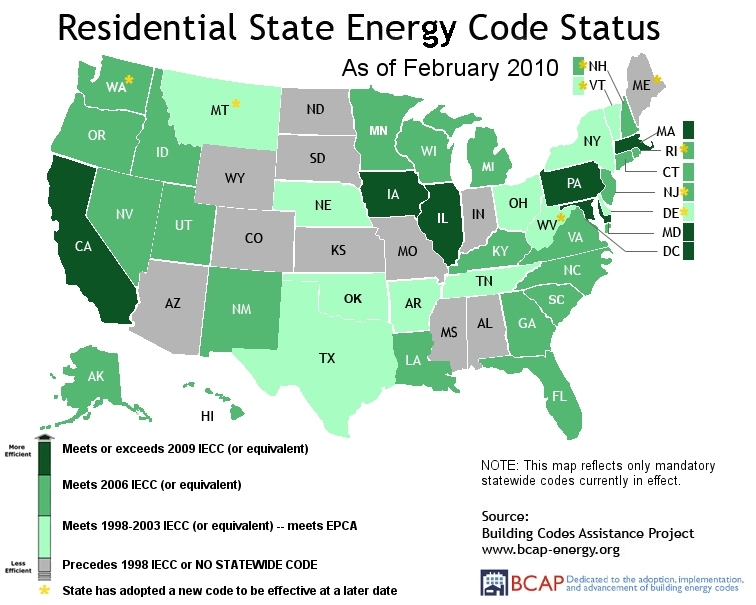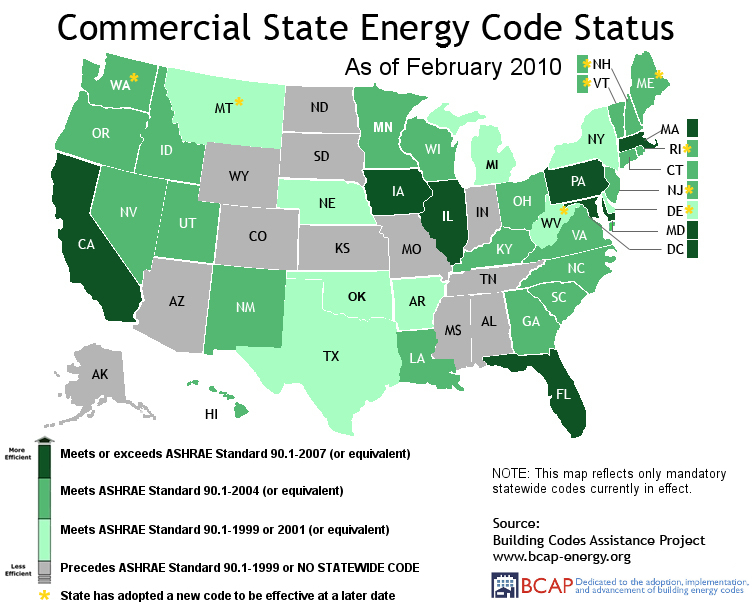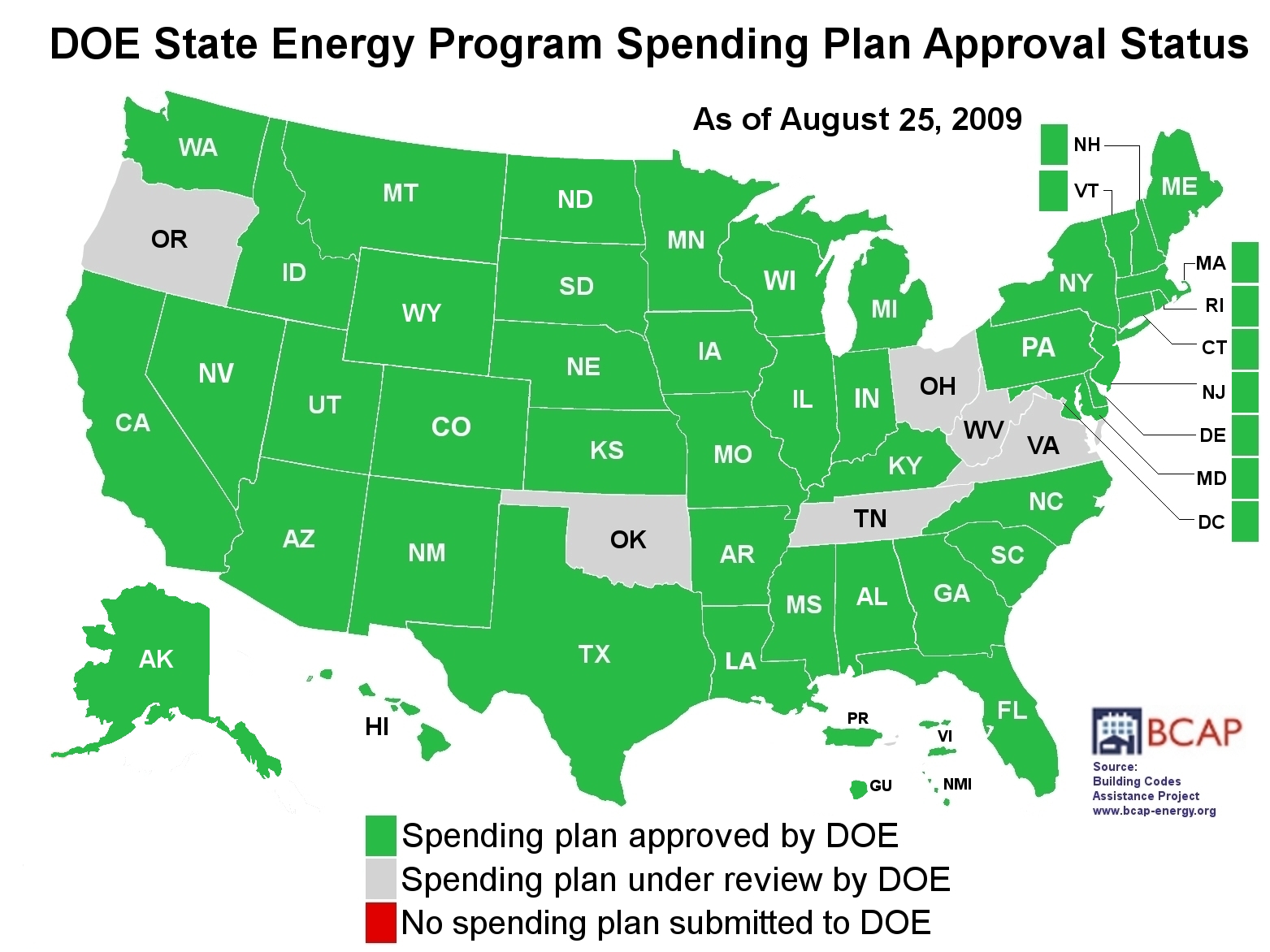DOE has been rolling through approvals of state energy plans and releasing huge chunks of the $3.1 billion available through the American Reinvestment and Recovery Act for State Energy Programs. All told, 29 states and several territories have received approval and substantial portions of their funding. This funding will be used for weatherizing low income homes and for various energy efficiency and renewable energy projects and programs. The press releases and more info can be found here. The Building Code Assistance Project has put together the nice map below for easy reference.

This is not at all a surprise, since DOE is under orders to get the money out fast. What is important to note here is that in these plans, the states agreed to satisfy the conditions for receiving the funds. Specifically, it means the governors have promised the following:
- To update their residential and commercial building codes to meet or exceed the most recently published codes
- To show 90 percent compliance with the codes by 2017
- To begin the process to align electric and gas utility incentives with helping their customers use energy more efficiently (meaning changing the business model so they don’t make more money by selling more energy, or decoupling profits from sales).
NRDC worked very hard to get these conditions into the bill and will continue to push for states to follow through on those pledges. It is absolutely critical that these reforms are made. I am sure some states will try to wiggle out of actually saving money for their residents, but the conditions in the bill are very clear.
In our work on the bill, we modeled the potential benefits of satisfying the conditions and they are massive, dwarfing the short term savings. By 2020, we would save $135 billion as a result of energy savings, and reduce annual greenhouse gas emissions by 150 million metric tons CO2 equivalent after the 10th year, about 2 percent of the U.S. 2006 total. That’s like taking 30 million cars off the road. Pretty big!
This isn’t some blue sky projection; we only modeled 19 states actually following through on the codes and 9 on the utility reforms and didn’t count any of the states that already comply. The blue sky scenario (all 50 states following through) is many times larger. To get these numbers we projected the savings from new construction and the startup of succesful utility energy efficiency programs as a result of the reforms.
If your state is on the list, then keep in mind what is now supposed to happen and why. You should see ASHRAE 90.1 2007 code for commercial buildings and IECC 2009 for residential buildings adopted in short order. You should also see a utility proceeding beginning to decouple. I am sure some of your elected officials will need reminding when the spending spree is over.
To put this in visual terms, here are the residential and commercial code status maps I have often cited, courtesy of the Building Code Assistance Project. If all the states accept the funding, then eventually we should have residential and commercial maps that are entirely dark green. Goodbye blank spots.


The map representing the current states that satisfy the second condition for utility regulatory reform is below. Having all states with blue shading and red hashing would be a huge win for efficiency and for consumers.

Unfortunately, enforcement of these conditions will be a different matter than getting a politician to make a promise for money. It would be a shame if our elected officials forget that the stimulus is supposed to aid the short, medium, and long term health of our economy rather than just certain pet projects. It may be necessary to remind them that the whole point of energy efficiency is to invest a little now to save a lot later.



